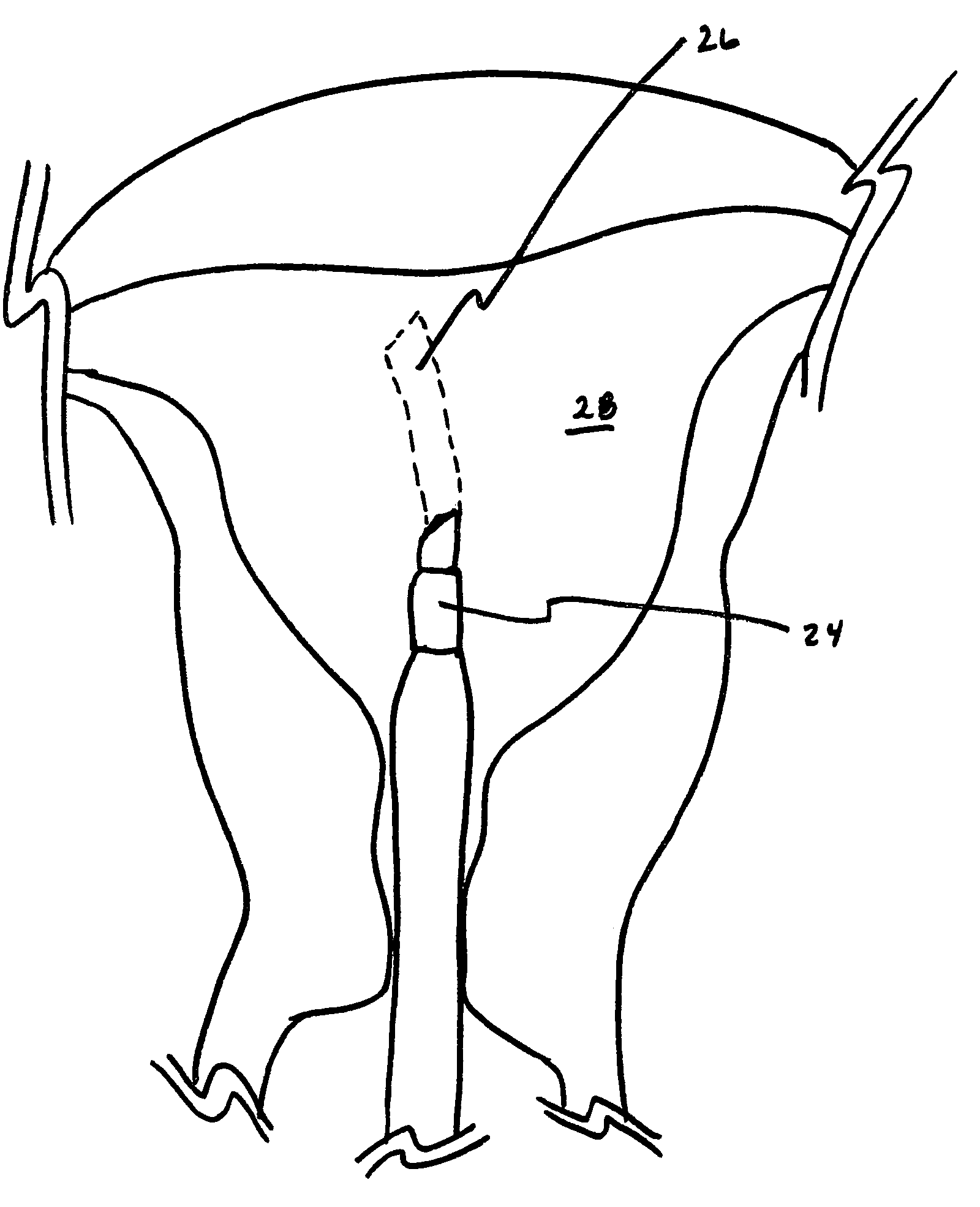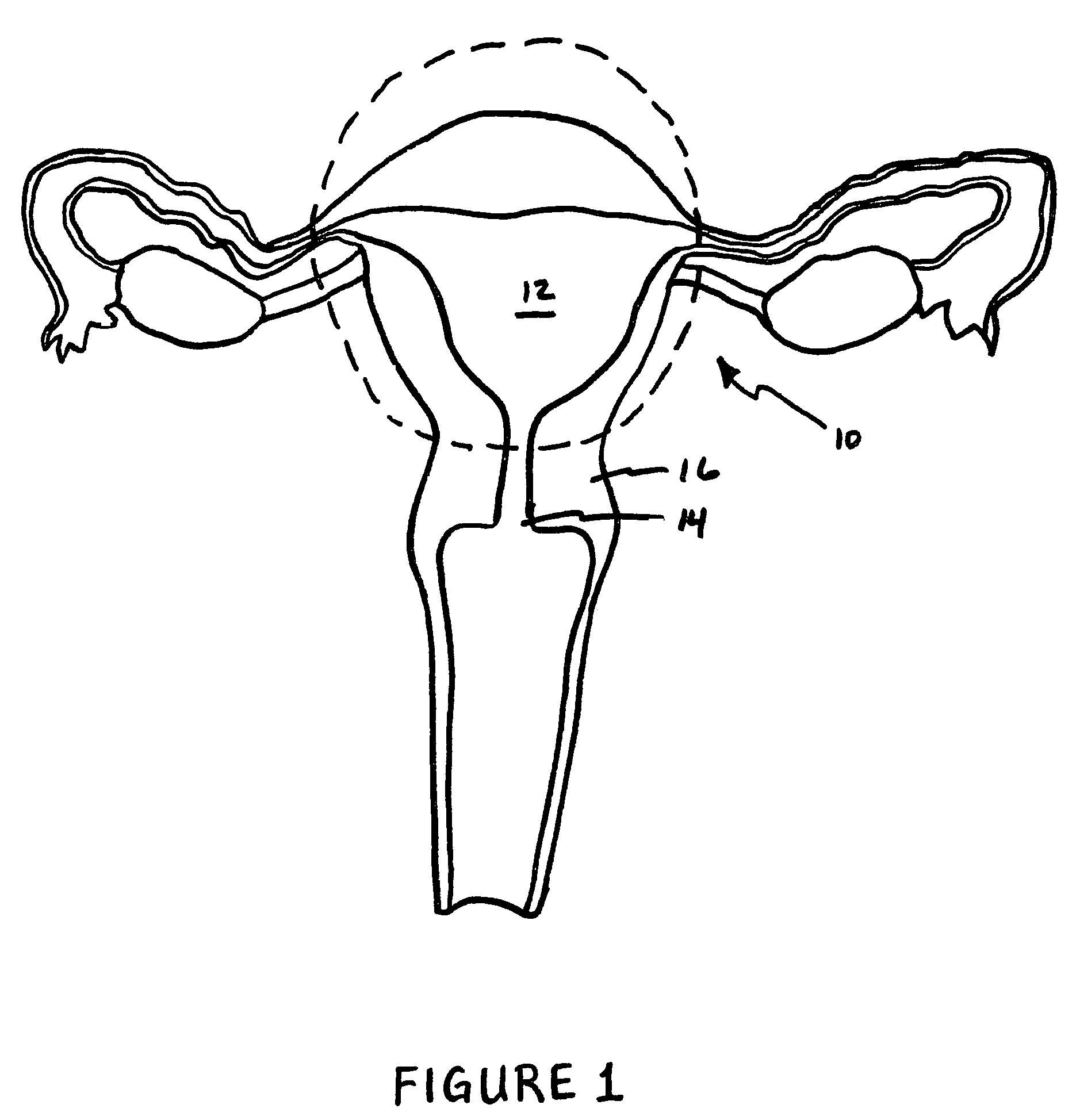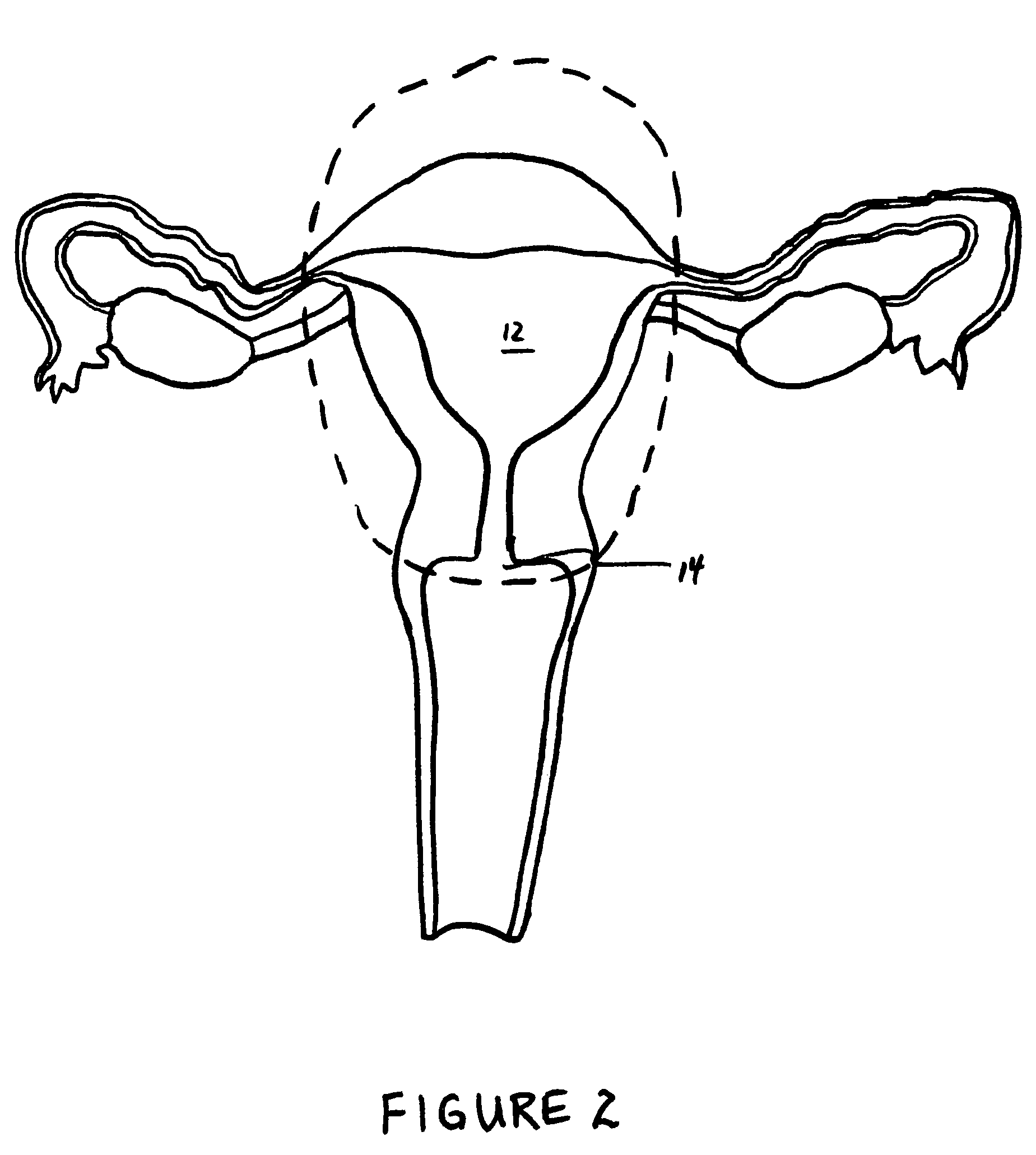Method and apparatus for creating intrauterine adhesions
a technology of intrauterine adhesion and creating method, which is applied in the direction of prosthesis, catheter, application, etc., can solve the problems of affecting the development of pregnancy, so as to prevent conception and promote adhesion formation
- Summary
- Abstract
- Description
- Claims
- Application Information
AI Technical Summary
Benefits of technology
Problems solved by technology
Method used
Image
Examples
Embodiment Construction
[0080]Referring to FIG. 8, an embodiment of the intrauterine implant device 40 in accordance with the present invention is shown deployed within a uterus 42. The uterus 42, or womb, is part of the female internal genitals. The uterus 42 is a hollow, muscular organ approximately four inches long and three inches wide and is generally shaped like an upside-down pear. It should be noted that the uterus 42 depicted in FIG. 8 is in a distended state to clearly show the uterine cavity 44. However, it is understood that the uterine cavity is normally in a collapsed state, as shown in FIGS. 9A and 9B.
[0081]Two openings 46 located at the upper end of the uterus 42 lead to the Fallopian tubes that are connected to the ovaries (not shown). Opposite to the upper end openings 42 is a lower, narrow open end 48 that forms the cervix 50 of the uterus 42 and extends to the vagina 52. The thick walls of the uterus 42 are comprised of three layers of tissue and muscle: the inner endometrial layer, the...
PUM
 Login to View More
Login to View More Abstract
Description
Claims
Application Information
 Login to View More
Login to View More - R&D
- Intellectual Property
- Life Sciences
- Materials
- Tech Scout
- Unparalleled Data Quality
- Higher Quality Content
- 60% Fewer Hallucinations
Browse by: Latest US Patents, China's latest patents, Technical Efficacy Thesaurus, Application Domain, Technology Topic, Popular Technical Reports.
© 2025 PatSnap. All rights reserved.Legal|Privacy policy|Modern Slavery Act Transparency Statement|Sitemap|About US| Contact US: help@patsnap.com



